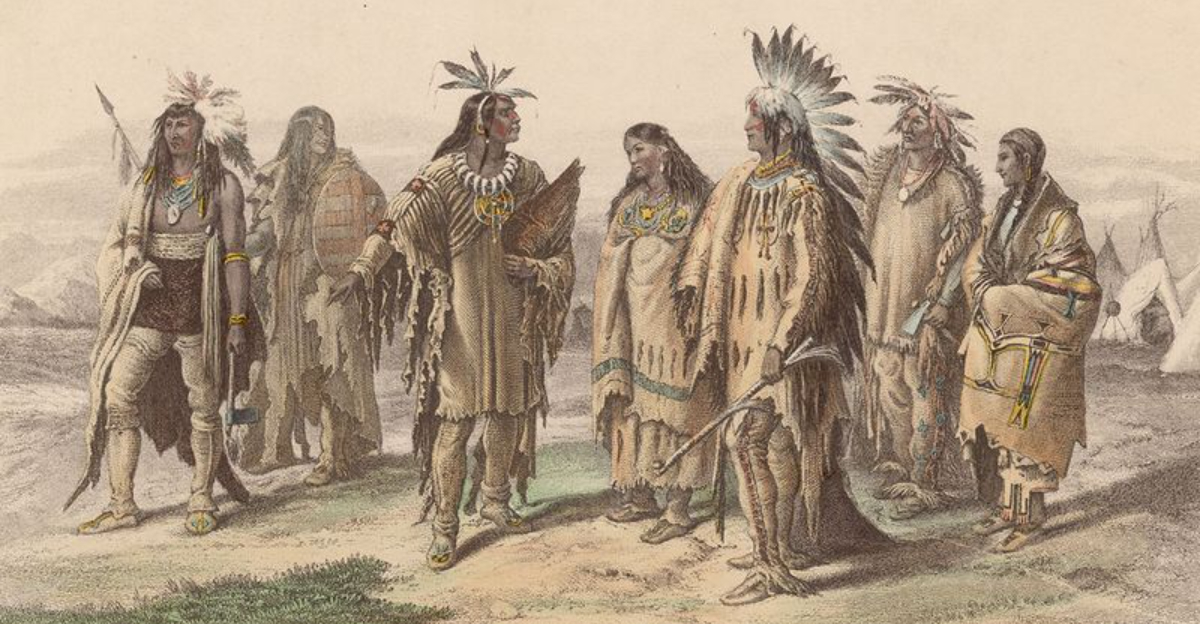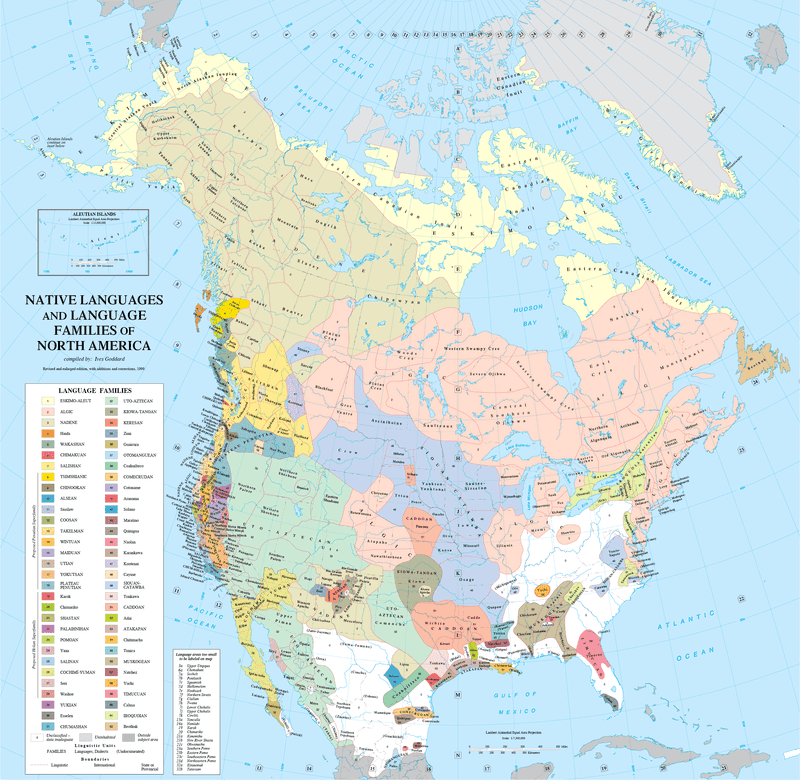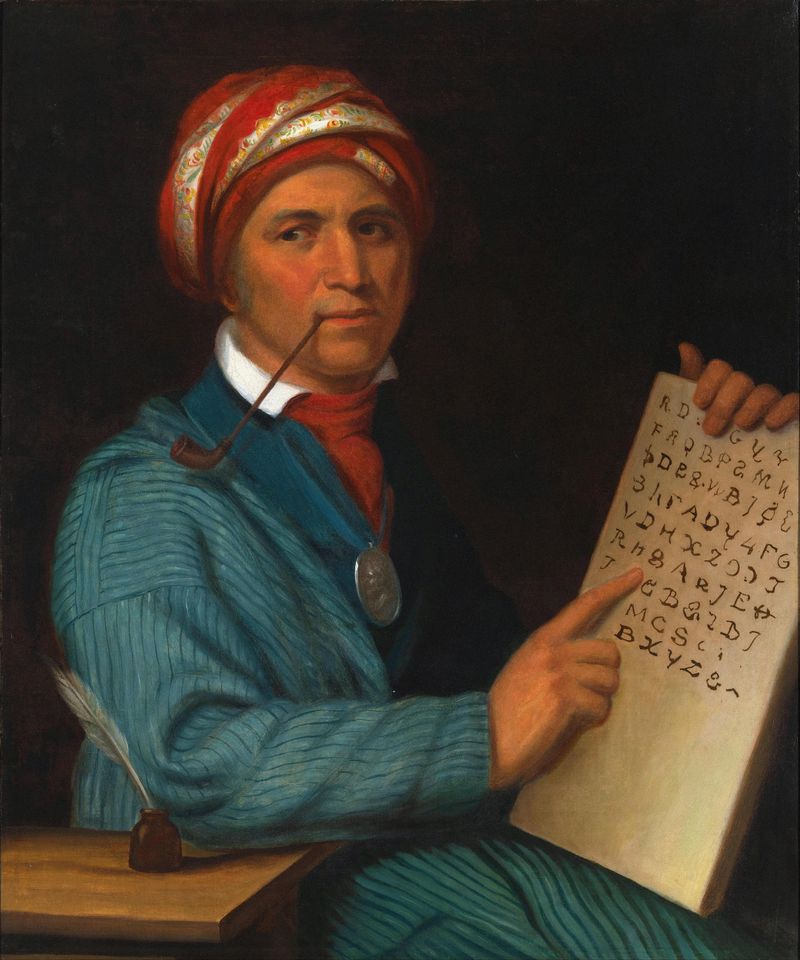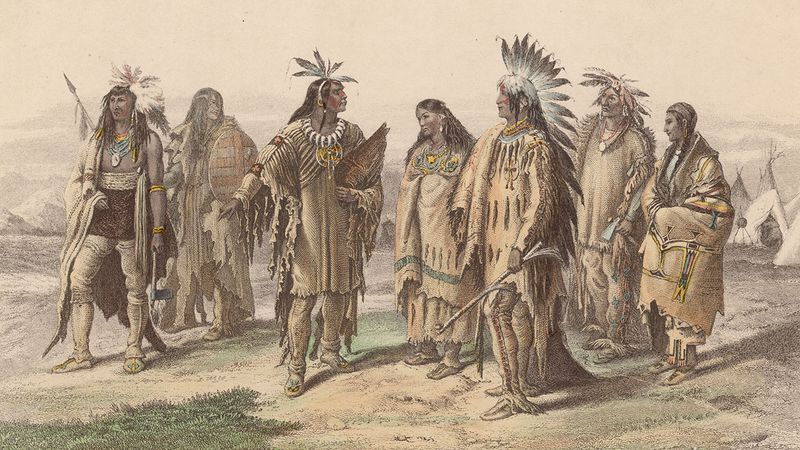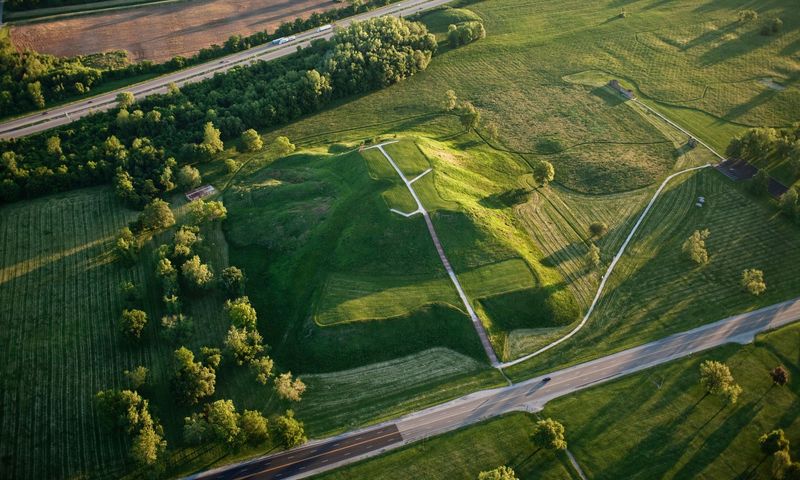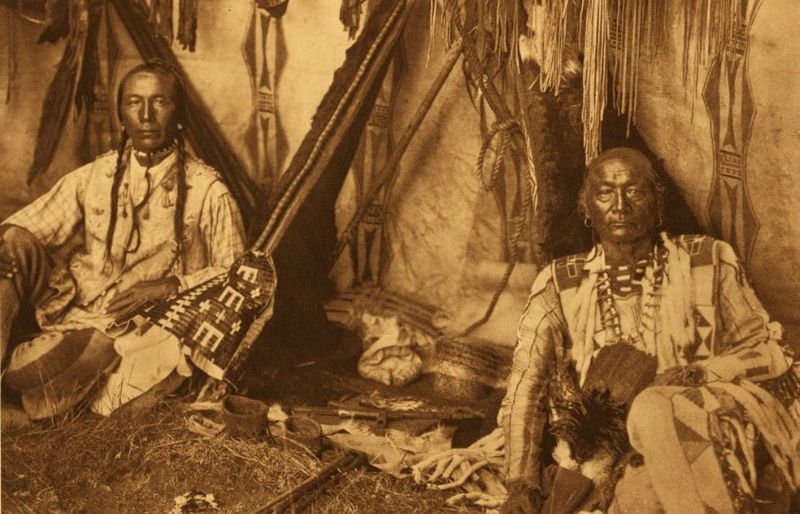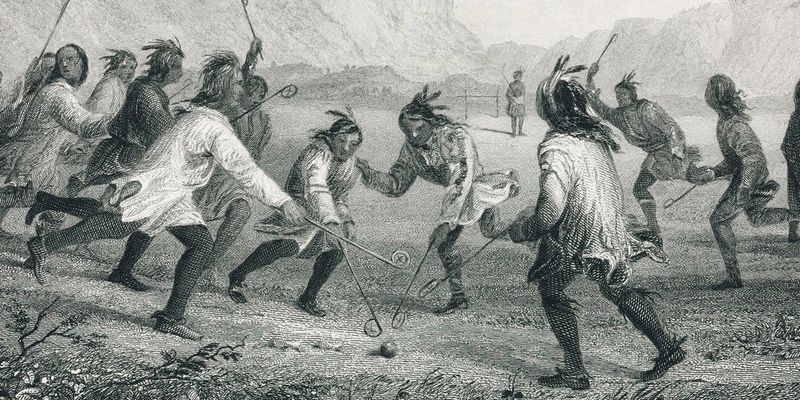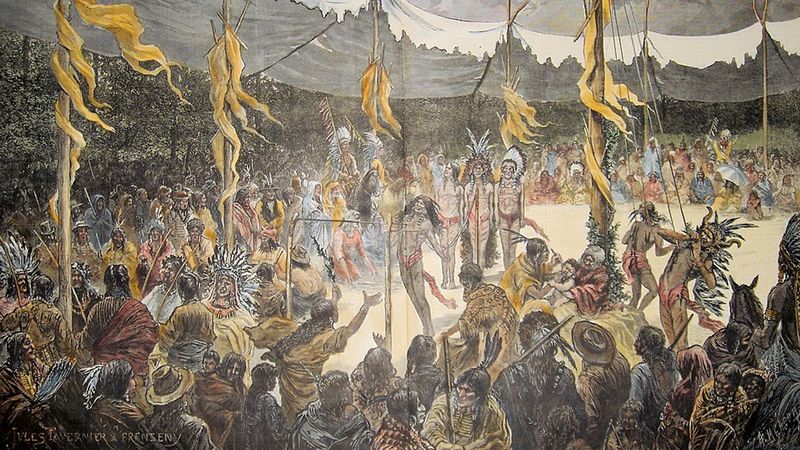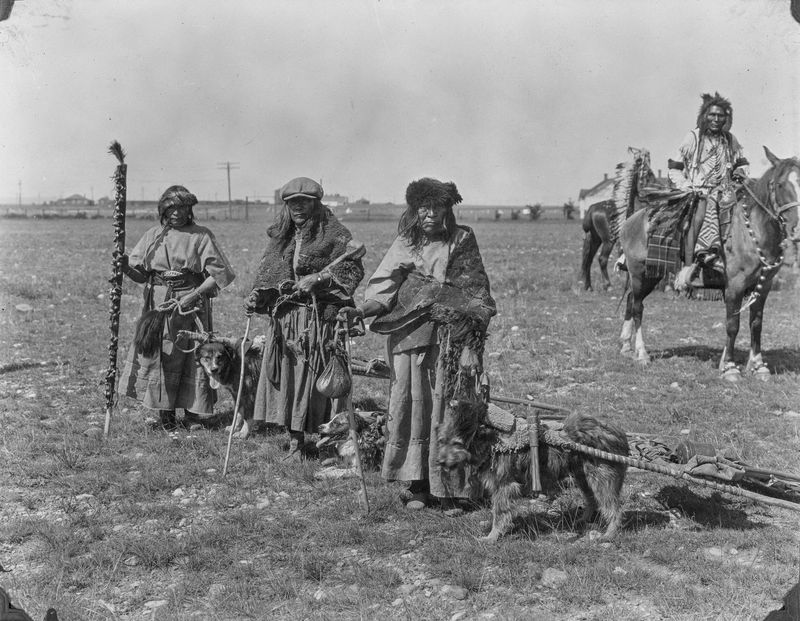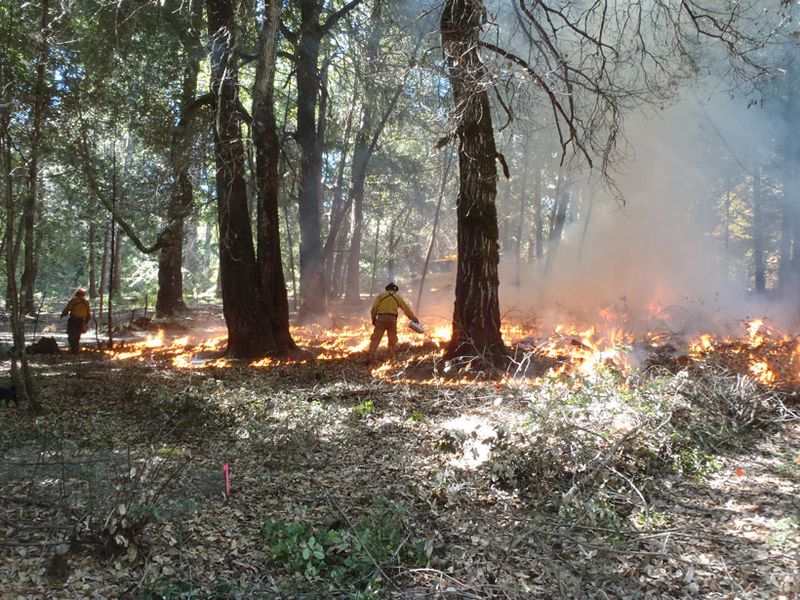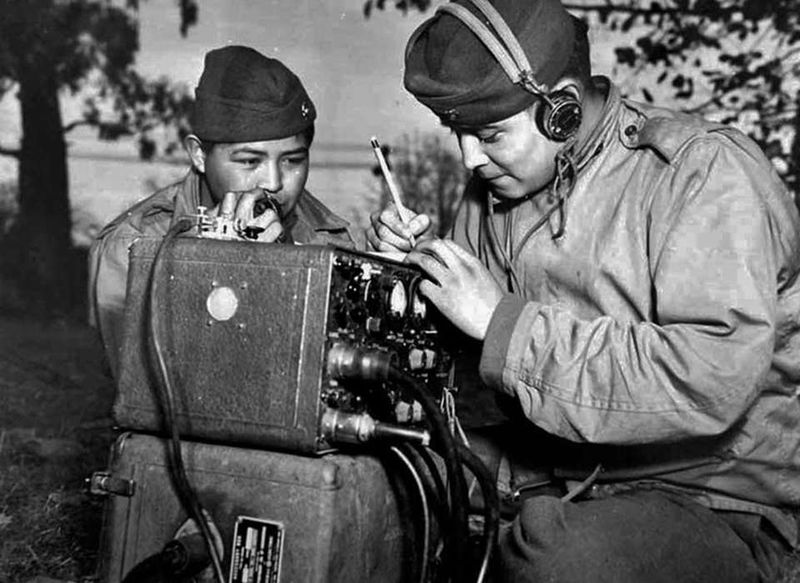Long before European settlers arrived, Native Americans thrived across North America with rich, diverse cultures. They developed advanced societies with unique technologies, spiritual practices, and sustainable ways of living. What we learned in history books often barely scratches the surface of their remarkable achievements and daily lives.
1. Rich Linguistic Tapestry
Before European contact, North America hummed with the sounds of 300-500 distinct languages—more linguistic diversity than all of Europe combined. These weren’t just different dialects but completely separate language families with unique grammatical structures and vocabularies. Many indigenous languages contained concepts that had no direct translation in European tongues, particularly regarding relationships with nature and spiritual understandings. Today, Navajo stands as the most widely spoken Native American language with approximately 170,000 speakers. Tragically, forced assimilation policies nearly eradicated this linguistic heritage, but revitalization efforts have gained momentum since the Native American Languages Act of 1990.
2. Cherokee Literacy Revolution
In 1821, a Cherokee silversmith named Sequoyah accomplished something remarkable—he invented an entire writing system without knowing how to read or write any other language. His 86-character syllabary allowed the Cherokee to achieve nearly 90% literacy within just a few years. This innovation transformed Cherokee society faster than any other preliterate culture in recorded history. By 1828, they were publishing the Cherokee Phoenix newspaper, printed bilingually in both Cherokee and English. When government officials discovered Cherokee children reading and writing in their own language, they were astonished at how rapidly literacy had spread throughout the nation.
3. Agricultural Innovators
Native Americans domesticated approximately 60% of the crops consumed worldwide today. Without their agricultural innovations, we wouldn’t have corn, potatoes, tomatoes, chocolate, vanilla, peanuts, or hundreds of other foods we now consider essential. The ingenious “Three Sisters” planting method combined corn, beans, and squash in a single mound. Corn provided a natural trellis for beans to climb, beans fixed nitrogen in the soil, and broad squash leaves suppressed weeds while conserving ground moisture. This companion planting technique maximized yields while maintaining soil fertility—a sustainable farming approach that many modern agriculturalists have only recently begun to appreciate.
4. Democratic Foundations
Formed around 1142 CE, the Haudenosaunee (Iroquois) Confederacy united five nations under history’s oldest continuously functioning democracy. Their Great Law of Peace established a sophisticated system of checks and balances between nations, chiefs, clan mothers, and citizens. Benjamin Franklin studied this confederation extensively, particularly admiring how it balanced individual freedom with collective responsibility. The Founding Fathers borrowed several concepts from the Iroquois, including federalism, separation of powers, and the importance of consensus-building. In 1988, the U.S. Congress passed a resolution acknowledging the influence of the Iroquois Confederacy on the Constitution and Bill of Rights—a fact rarely taught in American history classes.
5. Ancient Engineering Marvels
Long before Europeans arrived, Native Americans constructed monumental earthworks that rival Egypt’s engineering feats. The 72-foot-tall Monks Mound at Cahokia (near modern St. Louis) required moving more earth than the Great Pyramid of Giza and supported a massive wooden temple visible for miles. Even more astonishing are Louisiana’s Watson Brake mounds, dating to 3500 BCE—older than Stonehenge or Egypt’s pyramids. These precisely arranged earthen structures, built without metal tools or beasts of burden, demonstrate sophisticated knowledge of astronomy, geometry, and large-scale organization. Many mound complexes align perfectly with solstices and equinoxes, serving as enormous calendars that tracked seasonal changes.
6. Women-Centered Societies
Many European colonists were shocked to discover Native societies where women held significant political power. In matrilineal tribes like the Cherokee, Haudenosaunee, and Hopi, family lineage, property, and clan membership passed through mothers rather than fathers. Clan mothers selected and removed chiefs, controlled food distribution, and made critical decisions about war and peace. When Haudenosaunee women withheld supplies for a military campaign they opposed, warriors couldn’t proceed without their approval. These societies achieved remarkable gender balance thousands of years before European women could vote or own property. Some anthropologists believe this explains why Native women were among the inspirations for the early American women’s rights movement.
7. Medical Pioneers
Native Americans discovered and refined hundreds of medicinal plants that remain essential to modern pharmacology. Willow bark, which contains salicylic acid (the active ingredient in aspirin), was widely used for pain relief long before pharmaceutical companies synthesized it. The Pima treated diabetes with creosote bush and chaparral, while various tribes used echinacea to boost immunity and fight infections. When Europeans arrived with unfamiliar diseases, indigenous healers developed treatments faster than European doctors could. Even dental care was sophisticated—tribes used sweetgrass as antibacterial mouthwash and chewed on specific roots to clean teeth and strengthen gums. Many of these traditional remedies are now being scientifically validated by medical researchers.
8. Lacrosse: The Creator’s Game
What we know today as lacrosse originated among Eastern Woodlands tribes as a ceremonial event called “The Creator’s Game.” Far more than mere sport, these massive contests could involve hundreds of players from different villages and last for days across fields spanning miles. Games served multiple purposes: training warriors, settling disputes between tribes without warfare, healing the sick through community involvement, and communicating with spiritual forces. Players used intricately carved wooden sticks with netting made from deer sinew. The Choctaw believed playing lacrosse pleased the Creator and brought blessings to their communities. French missionaries who first witnessed these intense competitions named the game “la crosse” after the bishop’s crosier the sticks resembled.
9. Resourceful Personal Care
Native Americans developed ingenious hygiene solutions using natural materials. Yucca root created foaming shampoo that cleansed hair without stripping natural oils, while prickly pear cactus juice served as hair conditioner and styling product. For dental hygiene, many tribes crafted toothbrushes from specific twigs with naturally antimicrobial properties. The ends would be chewed until they frayed into bristle-like fibers. Porcupine quills, carefully processed to remove barbs, became fine-toothed combs and hairbrushes. Women used crushed berries and plant pigments as natural cosmetics, while both genders applied fragrant plant oils as deodorants. These sustainable practices maintained cleanliness without commercial products or environmental harm.
10. Profound Spiritual Endurance
The Sun Dance ceremony, practiced by Plains tribes like the Lakota and Blackfeet, demonstrated extraordinary spiritual devotion through physical sacrifice. Participants danced for days without food or water while staring directly at the sun, connected to a central pole by rawhide thongs pierced through their chest muscles. This intense ritual wasn’t about proving toughness but achieving spiritual transcendence through self-sacrifice for community welfare. Dancers reported powerful visions and spiritual insights during their ordeal. The U.S. government banned the Sun Dance in 1904 as part of broader suppression of Native religions. Many tribes continued practicing in secret until the American Indian Religious Freedom Act of 1978 finally restored their right to worship freely.
11. Canine Companions
Long before horses transformed Plains culture, Native Americans selectively bred domestic dogs for specific working purposes. Archaeological evidence shows indigenous dog breeding began at least 9,000 years ago, creating specialized varieties for hunting, hauling, and protection. Northern tribes developed powerful sled dogs, while Plains people bred travois dogs strong enough to drag heavy loads across vast distances. Some tribes even maintained specific lineages of small, quiet hunting companions trained to track deer without alerting them. Beyond practical roles, dogs held spiritual significance in many tribes. The Lakota believed dogs could see spirits invisible to humans, while the Cheyenne included a Dog Soldier society among their most honored warriors—men who took vows to fight to the death like loyal dogs.
12. Living Family Histories
The towering totem poles of Pacific Northwest tribes weren’t religious idols as early missionaries mistakenly believed. These intricately carved cedar monuments served as visual libraries—recording family histories, important events, and cultural knowledge through symbolic animal and human figures. Each carving told specific stories recognizable to community members. A pole might display a family’s ancestral crests, commemorate a potlatch celebration, or honor a chief’s achievements. The position of figures mattered: those placed higher held greater importance. Creation of a single pole could take a master carver years to complete. The Haida, Tlingit, and Tsimshian peoples developed particularly sophisticated carving traditions, with some poles reaching heights of 60 feet or more.
13. Fire Ecology Experts
For thousands of years, Native Americans used controlled burns to manage landscapes—a practice only recently embraced by modern forestry. Tribes like the Karuk, Yurok, and Pomo deliberately set small, carefully timed fires to prevent catastrophic wildfires and enhance ecosystem health. These cultural burns cleared underbrush, recycled nutrients, promoted growth of medicinal plants, improved wildlife habitat, and increased food production. Acorn-producing oaks thrived with regular burning, while fire-dependent plants like beargrass—essential for basket-making—only flourished after controlled burns. When European settlers banned these practices and implemented total fire suppression, forests gradually became dangerously overgrown. Today, many forest managers are turning to indigenous knowledge to restore healthier fire regimes.
14. Forced Migrations
While the Cherokee Trail of Tears is widely known, it represents just one chapter in a broader tragedy. Following the 1830 Indian Removal Act, approximately 60,000 Native Americans from dozens of tribes were forcibly relocated from their ancestral homelands to territories west of the Mississippi River. The Choctaw removal predated the Cherokee’s, with thousands dying during their winter march to Oklahoma in 1831. Muscogee (Creek) people faced particularly violent removal, with many placed in chains during their forced journey. The Seminole resisted removal through three wars, while the Chickasaw negotiated somewhat better conditions but still suffered tremendous losses. These traumatic displacements shattered ancient connections to sacred sites and dramatically altered tribal economies and social structures.
15. Patriotic Service Before Citizenship
When America entered World War I, thousands of Native Americans volunteered for military service despite not being recognized as U.S. citizens. Approximately 12,000 served in WWI and over 44,000 in WWII—representing nearly one-third of all able-bodied Native American men. Perhaps most famous were the Navajo Code Talkers, who developed an unbreakable communication system based on their complex language. Less known were the Comanche, Choctaw, and other tribal code talkers who served similar roles in both world wars. This extraordinary patriotism came despite the bitter irony that Native Americans couldn’t vote in U.S. elections until the Indian Citizenship Act of 1924—granted partly in recognition of their WWI service.
16. Architectural Adaptations
Native Americans developed housing perfectly suited to local environments without modern construction materials. Desert-dwelling Pueblo peoples built multi-story adobe apartments with thick walls that absorbed heat during day and released it at night—a passive solar design principle architects rediscovered centuries later. In the rainy Northwest, tribes constructed massive cedar plank longhouses with removable roof sections for smoke ventilation and natural light. Some housed 50+ people from extended families. Perhaps most ingenious were the Plains tipis—portable homes that could be dismantled and packed in 15 minutes, carried by dogs (later horses), and reassembled elsewhere. Their conical design withstood powerful winds while an ingenious smoke-flap system provided ventilation regardless of wind direction.
